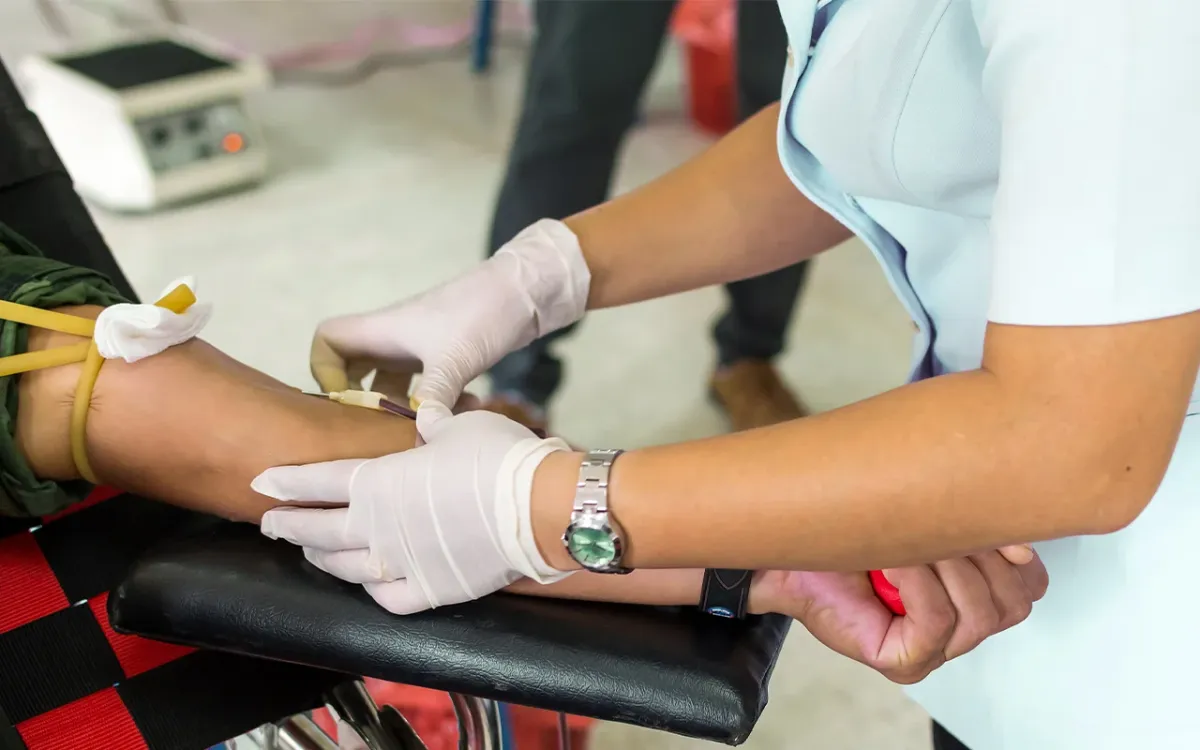Donations of whole blood, plasma, and platelets are crucial in meeting the need for blood and blood components at numerous medical facilities and treatment centers worldwide.
Private plasma donation organizations could let plasma donations several times a week, although the American Red Cross only permits them once every 28 days.
Continue reading to find out the significance of plasma donations, the frequency of plasma donation, and important information regarding plasma donation side effects.
Too frequent donations may impair quality
However, studies indicate that regular contributions might have a detrimental effect on the plasma’s quality. This might be the result of the body’s limited capacity to swiftly repair crucial plasma constituents.
Researchers examined and contrasted the plasma quality of donations from different nations in a 2010 study (Trusted Source).
They discovered that plasma from donors who gave more often and in larger amounts had far lower levels of albumin, total protein, and other blood indicators in the US.
Donating plasma, especially frequently, should always be done under your doctor’s supervision, whether it’s to combat COVID-19 or to provide an additional source of income.
In addition to closely monitoring your blood tests and reviewing your medical history, your doctor can advise you on the safest method of plasma donation.
How many plasma donations am I allowed to make?
Donations of plasma to the American Red Cross are limited to once every 28 days, or up to 13 times annually.
However, the majority of private plasma donation organizations permit plasma donations up to several times a week.
Pay-per-gift plasma donation organizations provide donors with money incentives. Regular plasma donation is a profitable option for many people to supplement their income.
Which kind of plasma is most necessary?
Plasma can be donated by anyone with any blood type, however AB plasma contributions are among the most significant. This is due to the fact that AB plasma is “universal,” which means that patients with any blood type can receive it.
Furthermore, a kind of plasma known as convalescent plasmaThose who have recovered from an illness may be able to give to Trusted Source.
After being donated, this antibody-containing plasma could be utilized to treat the disease in those who are affected.
Although it has been studied as a possible COVID-19 treatment, convalescent plasma has generated debate among medical professionals.
Is giving plasma safe?
For the majority of donors, the process of donating plasma is secure, comfortable, and reasonably simple.
The nurses will check that you are comfortable and well enough to proceed with the donation procedure when you come for your appointment.
You will be connected to a plasmapheresis machine when you have settled in. Your blood is drawn, the plasma is separated, and the blood is then returned to your body by this machine.
Donations of plasma must always be made in a licensed facility using sterile equipment.
Before, during, and after the procedure, certified nurses will be on hand to make sure everything is going according to plan.
What makes donating plasma important?
Blood cells and plasma are the two main components of human blood.
The cellular component of blood is composed of platelets, white blood cells, and red blood cells. Blood’s plasma is composed of several components, including proteins, carbohydrates, lipids, and water.
The body uses blood plasma for a number of vital purposes, including:
regulate blood volume and pressure, keep pH levels stable, and circulate electrolytes, blood clotting proteins, and other nutrients required for cellular metabolism.
Donating plasma is crucial because it can be used to treat patients who have suffered from:
severe liver disease
burns, trauma shock
clotting factor deficits

